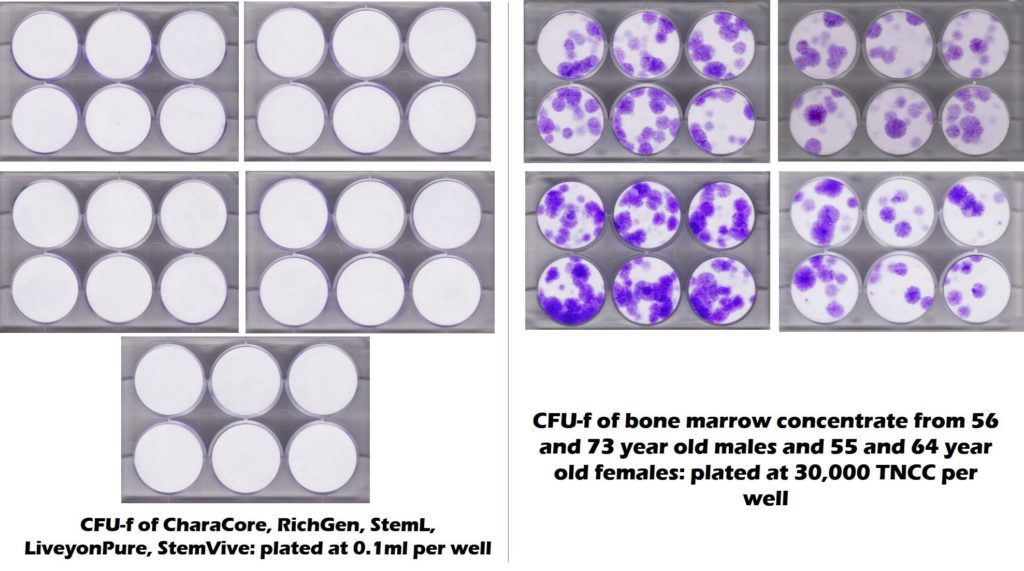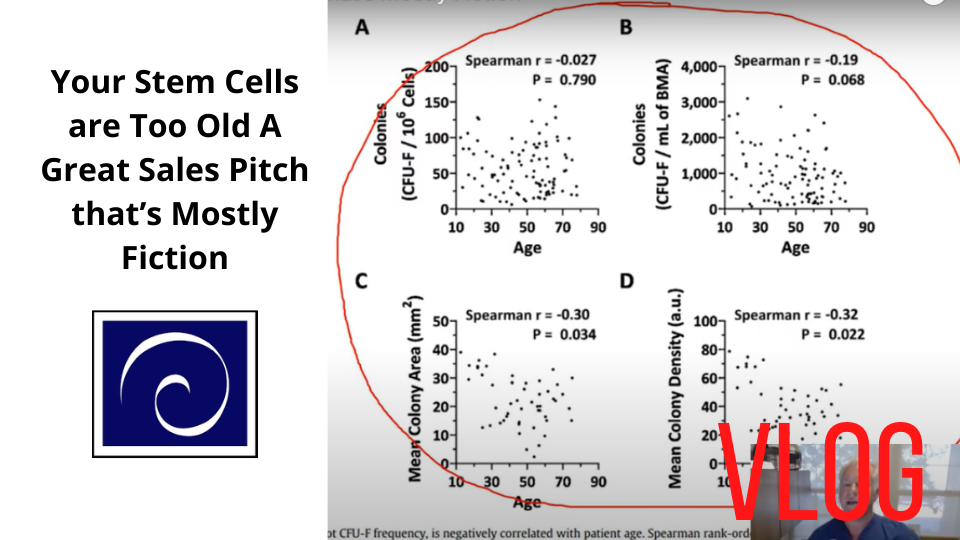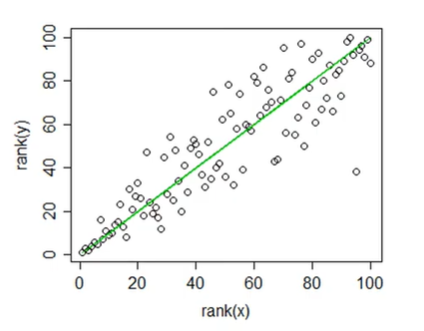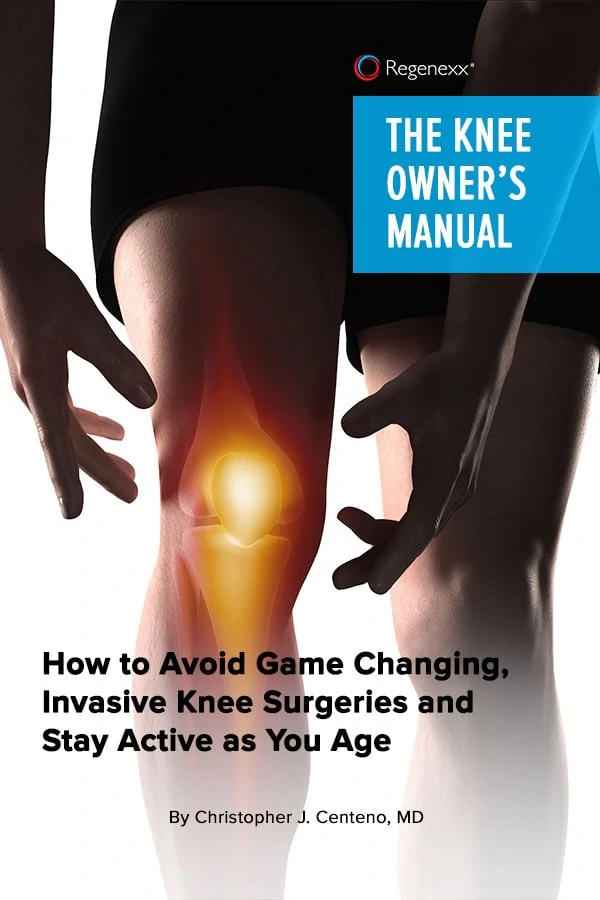Transcript
Hey, it’s Dr. Centeno, and I’d like to go over what is a great sales pitch out there but mostly fiction, and that is the concept that you’re just too old to use your own stem cells. And I’ve done this before, but, literally, this has gotten so out of hand as a sales pitch, not grounded in reality, that it needs to be revisited. So this is an interesting graphic I found online from a stem cell clinic that purports to offer umbilical cord stem cells. I’ll show you why that’s not the case.
But what’s interesting here is, number one, I love the graphic – I really do appreciate the graphical art here. But what it purports to show is a baby has lots of stem cells, and then an 18-year-old less, a 30-year-old less, a 60-year-old less. Now, right away, you can see something that’s not right here, right? 18-year-olds and 30-year-olds generally don’t have a hard time healing at all.
So that doesn’t make so much sense. And I’m going to show you why this whole sales pitch that there are many more stem cells in the baby – and that’s where you need to get your stem cells, and you can’t use your own bone marrow if you’re over 30 or something – is actually just total fiction.
So if we’re looking at these graphs that I’m going to show next, if there was a correlation between age and decreased number of stem cells, we would see this really nice, tight band of the data points. And that’s called a spearman’s correlation between two things.
Now, when we look from one of, actually our research papers here (above), and this is actually the largest data set of bone marrow from the patient versus age, we don’t see those nice tight little correlations here, meaning that we’re not seeing a drop in the number of stem cells in the bone marrow versus the age of the patient. What we do see is a drop slightly in activity as the patient gets older, but not in stem cell number.
So, there is a slight drop in stem cell activity with age, but that’s easily overcome by concentration of the cells.
So, precision orthobiologics is all about taking stem cells from one spot, concentrating them, and then using imaging guidance to place them at another spot where they’re needed.
In addition, our registry data on more than twenty thousand patients that used their own bone marrow stem cells show no decline in outcome with age, other than in the specific condition of hip osteoarthritis.
So that means if we’re treating a rotator cuff tear, shoulder arthritis, or knee arthritis, or a knee meniscus tear, or ankle issues, or spine issues; there is no difference between how an older patient responds to using their own bone marrow stem cells, versus a younger patient. Very, very critical for you to understand.
We also looked at these umbilical cord products because we thought we may have an interest in them at one point, and, as you can see here on the left, we tested five different umbilical cord products that all stated they contain stem cells, and all that white means there were no stem cells in those products.

Off on the right, all those purple dots actually represent stem cells in the middle-aged and elderly bone marrow. So the concept of a sales pitch that you can use amniotic or umbilical cord tissue because it’s rich in young stem cells is total fiction. There are no stem cells in that tissue at all.
So, how about studies that show that umbilical cord tissue has stem cells, because you may have seen some of those on some of these websites. And that’s a really great question because it differentiates between taking an umbilical cord right from a baby, running it down to the lab where you can get cells in that instance, versus, taking that same umbilical cord, shipping it someplace, having it sit in a freezer, having someone take it out of the freezer, having someone process it, having someone bottle it, freezing that stuff, storing that stuff, sending that stuff halfway across the country and then thawing it in someone’s hand versus thawing it properly as it would be done in a lab.
So, in the first instance of running it down to the lab in the hospital, it has stem cells. Those stem cells are still alive. But once it’s processed, the way these products are that are used by these clinics, there are no live stem cells in that product.
So this is just a great sales pitch that’s total fiction, so please don’t fall for this sales pitch. I’ve seen it time and time again. Again, I love and respect the graphic, but it’s just that: a graphic that has little basis in reality.
So thanks so much for watching and have a great day.



